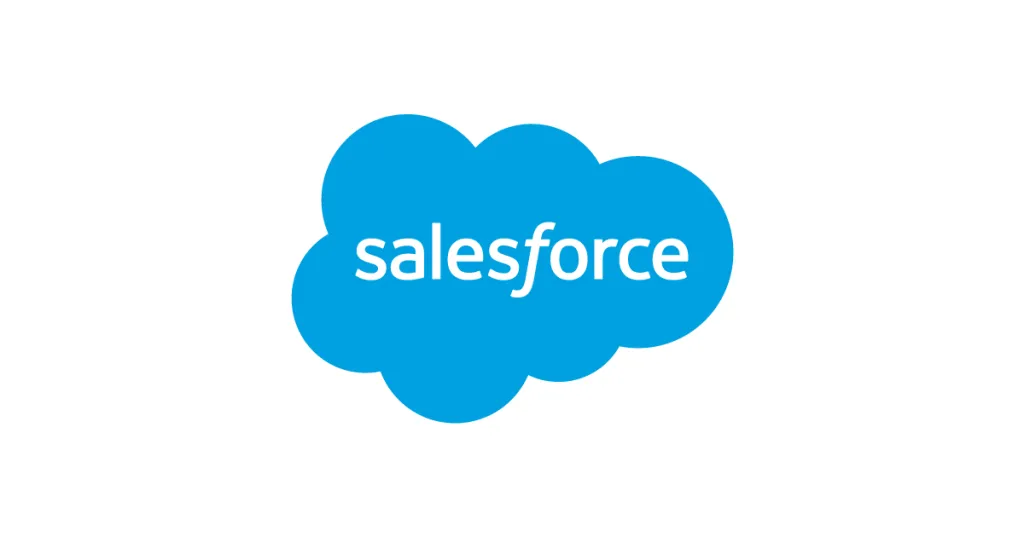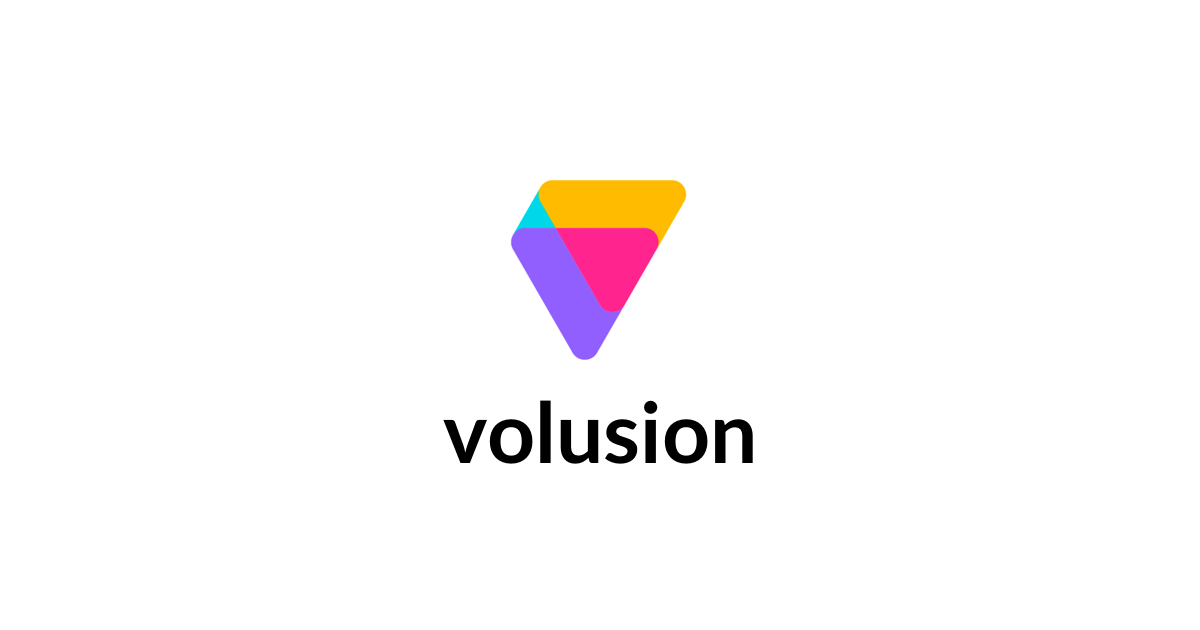Introduction
As ecommerce continues to grow rapidly, marketplace platforms have become an important tool for merchants to expand their customer base and offerings. Whether you want to launch your own online marketplace or integrate marketplace capabilities into an existing store, the right software can supercharge your sales. In this post, we’ll review 15 top-rated marketplace platforms and evaluate their key features to help you find the best fit.
Methods of Evaluation
To evaluate each platform, we considered the following factors: features and functionality and ease of use, integrations and developer support, pricing and plans, customer reviews and ratings. We also looked at more subjective criteria like popularity based on traffic trends, backlinks and brand authority. Reviews on third party sites like TrustPilot and Capterra were also factored in. The top platformsfeatured flexible and customizable options, great usability for non-technical users, and robust integrations for payment processing, shipping, CRM and other key business systems.
1. Shopify
Shopify is a leading ecommerce platform that allows businesses of all sizes to set up an online store and sell products. Founded in 2004 and based in Ottawa, Canada, Shopify powers over 1 million businesses globally. Shopify provides merchants with a full-featured ecommerce solution that includes tools for building and designing an online store, payment processing, shipping and inventory management, marketing and sales.
Pros: Some key advantages of Shopify include:
– Fully customizable and scalable ecommerce platform that grows with your business
– Intuitive dashboard and admin interface that requires no technical skills
– Large selection of free and paid apps to extend functionality
– Integrated payments, shipping, and tax calculations
– Mobile-optimized themes for responsive storefronts
Cons: One potential disadvantage of Shopify is the monthly subscription fee, which starts at $29 per month. However, this fee provides access to Shopify’s full suite of features and support.
Pricing: Shopify offers several monthly pricing plans:
– Shopify Lite: $9/month, includes basic ecommerce capabilities
– Shopify: $29/month, includes core ecommerce features
– Shopify Advanced: $79/month, adds additional sales channels and funds
– Shopify Plus: Pricing varies based on needs, targets large enterprise retailers
Some key stats about Shopify include:
– Over 1 million businesses use Shopify worldwide
– Processes over $150 billion in sales annually
– Available in over 175 currencies and supported languages
– Hosts stores in over 175 countries
– Offers 24/7 customer support
2. Wix
Wix is a leading global SaaS platform for building and managing professional websites and online stores. Founded in 2006 and based in Tel Aviv, Israel, Wix enables millions of businesses, organizations, professionals and individuals to take their businesses, brands and workflow online. Wix has over 200 million users worldwide.
Pros: Key advantages of using Wix include:
– Easy drag-and-drop website builder for non-technical users
– Large selection of commerce-ready templates and apps
– Built-in SEO and marketing tools to boost traffic and sales
– Mobile-responsive and cross-browser compatible designs
– Robust ecommerce functionality including inventory management
Cons: A potential disadvantage of Wix is that customization options for more advanced features are somewhat limited compared to platforms like WordPress. Businesses with very specialized design or functionality needs may find they need more control than Wix allows.
Pricing: Wix offers several pricing plans depending on needs. Basic plans start from $13/month while bigger ecommerce plans with additional features are $25-49/month. Wix also offers an unlimited ‘Business VIP’ plan for $35/month that includes a custom domain name, increased storage, and support.
Some key stats about Wix include:
– Over 200 million users worldwide
– Supports over 45 languages
– Over 500 commerce-ready templates and apps available
– Integrations with services like Google Analytics, PayPal, ShipStation, and more
– 24/7 live chat and email support
3. Squarespace Commerce
Squarespace Commerce is a leading all-in-one website building and ecommerce platform. With Squarespace, users can build fully functional websites and online stores without any coding required. Their intuitive drag-and-drop interface allows anyone to create professional and beautiful websites.
Pros: Some of the key advantages of Squarespace Commerce include:
– Simple to use all-in-one solution for websites and stores
– Beautiful templates that are optimized for speed
– Excellent platform for designers, photographers, and small brands to showcase their work
– Robust ecommerce functionality including product variants, discounts, and inventory management
Cons: A potential disadvantage is that customization options are more limited compared to other platforms like WordPress. Advanced developers may find Squarespace less flexible.
Pricing: Squarespace Commerce offers simple and transparent pricing plans starting from $12 per month for a Basic plan up to $40 per month for the highest Commerce plan, which provides advanced ecommerce functionality.
Some key stats about Squarespace Commerce include:
– Used by over 1 million customers worldwide
– Over 100 beautiful ready-made templates to choose from
– Integrated ecommerce capabilities to sell digital and physical products
– Average site load time under 1 second for fast and optimized performance
4. Mailchimp
Mailchimp is an email marketing and automation platform that allows businesses to segment audiences, design emails and ads, and track campaign effectiveness and sales. Founded in 2001, Mailchimp currently has over 20 million users including both small businesses and enterprise organizations.
Pros: Some key advantages of Mailchimp include:
– Intuitive and easy to use drag-and-drop interface suitable for both novices and experts
– Robust built-in ecommerce tools including product catalogs, shopping carts and abandoned cart recovery
– Powerful automation capabilities for drip campaigns, loyalty programs and more
– Comprehensive analytics and reporting to track campaign performance and ROI
Cons: One potential disadvantage of Mailchimp is that pricing can scale quickly for businesses with large subscriber lists or high monthly email sends.
Pricing: Mailchimp offers three primary pricing tiers:
– Free plan for up to 2,000 subscribers and 12,000 emails per month
– Essentials plan starting at $9.99 per month for up to 10,000 subscribers
– Select and Grow plans starting at $149 per month ideal for high volume email sends and additional features
Some key stats about Mailchimp include:
– Over 20 million active users worldwide
– Delivers over 15 billion emails per month
– Integrates with over 350 applications including Shopify, WooCommerce, BigCommerce and more
– Supports list segmentation up to 500 different audience segments
5. Salesforce Commerce Cloud
Salesforce Commerce Cloud, previously known as Demandware, is a cloud-based digital commerce platform that allows businesses to provide personalized and omnichannel shopping experiences across all customer touchpoints. With its robust personalization features and capabilities to support complex B2B commerce scenarios, Salesforce Commerce Cloud is a top option for organizations looking for an enterprise-level commerce solution.
Pros: Some key advantages of Salesforce Commerce Cloud include:
– Powerful platform for global B2B commerce
– Seamless 3rd party integration capabilities
– Robust personalization and AI capabilities to deliver personalized experiences across channels
Cons: A potential disadvantage is that the platform requires dedicated implementation and management resources which can drive up costs for businesses.
Pricing: Salesforce Commerce Cloud pricing is based on annual subscription plans that factor in user volumes, transactions processed and additional capabilities/modules needed. Custom pricing is available for enterprises based on specific business requirements.
Some key stats about Salesforce Commerce Cloud include:
– Used by over 1000 global brands including Guess, New Look, Mercedes Benz and Coty
– Facilitates over $100B in commerce transactions annually
– Supported in over 30 languages
6. WooCommerce
WooCommerce is an open-source ecommerce platform built on WordPress. It allows businesses to build an online store for selling physical and digital goods through a WordPress site. WooCommerce is currently powering over 30% of all online stores and is the leading open-source ecommerce platform with over 5 million active installations globally.
Pros: Some key advantages of using WooCommerce include:
– It is free and open-source which makes it highly cost effective
– Has a huge developer community and ecosystem around it due to being built on WordPress
– Seamlessly integrates with WordPress CMS allowing managing of content and products on the same platform
– Has robust extension capabilities through its large plugin library
Cons: One of the key disadvantages of WooCommerce could be that it does require some technical knowledge or assistance to set up the online store since it runs on WordPress.
Pricing: WooCommerce has a freemium pricing model where the core platform remains free and open source. However, there are some paid plans also available for premium support and features.
Some key stats about WooCommerce include:
– Over 30% market share of online stores
– More than 5 million installations worldwide
– Integrated with 60+ payment gateways
– Supported on all major hosting platforms
– Has over 200,000 extensions available through its plugin repository
7. PrestaShop
PrestaShop is a free and open-source ecommerce platform built for merchants and entrepreneurs. It is one of the most popular ecommerce solutions in the world powers over 350,000 online stores in more than 150 countries. With PrestaShop, you can create and customize an online storefront for any business with no technical skills required.
Pros: Some key advantages of PrestaShop include:
– Free and open-source software with no license fees
– Large global community for support
– Highly customizable storefront design and features
– Mobile responsive templates for seamless shopping on any device
– Integrations with hundreds of apps for extending functionality
Cons: One potential disadvantage of PrestaShop is that it requires technical skills and developer assistance for more advanced customizations beyond basic design and feature modifications.
Pricing: PrestaShop offers a free open-source version that can be self-hosted. For an additional fee, they also offer a commercially supported hosting solution on PrestaShop Cloud starting from $29/month.
Some key stats about PrestaShop include:
– Used by over 350,000 online stores worldwide
– Available in 60+ languages
– Over 50,000 apps and modules available on PrestaShop Addons marketplace
– Supports all major payment gateways and shipping carriers
– Customizable design and features for any niche or industry
8. Square
Square is a financial services and digital payments company based in San Francisco. Founded in 2009, Square provides merchants of all sizes with an all-in-one point-of-sale solution that allows them to accept card payments, manage their business and grow online sales.
Pros: Some key advantages of Square’s marketplace tools include:
– All in one POS, payments and online store solution.
– Simple to use tools for both in-person and online selling.
– Integrated payment processing eliminates separate card processing fees.
Cons: A potential disadvantage is that Square’s features are best suited for small to medium sized businesses. Very large enterprises may need more advanced e-commerce and point of sale capabilities.
Pricing: Square pricing starts at 2.6% + $0.10 per tap/swipe transaction for in-person card payments. Online transactions are charged at 2.9% + $0.30. Additional monthly or annual subscription fees apply for more advanced features like inventory management, loyalty programs, and shipping integrations.
Some key stats about Square include:
– Over $100 billion in transaction volume processed in 2020.
– Over 6 million sellers use Square’s tools.
– Employes over 8,000 people.
– Processes over $1 trillion in payments per year.
9. BigCommerce
BigCommerce is an all-in-one ecommerce platform that allows businesses of all sizes to build, manage and grow their online stores. Founded in 2009, BigCommerce powers over 60,000 online stores in over 120 countries worldwide. The platform offers a complete ecommerce solution with features ranging from templates and themes, payments and shipping, to marketing and automation tools. Let’s take a deeper look into what BigCommerce has to offer.
Pros: Some key advantages of BigCommerce include:
– All-in-one SaaS platform for fast setup and management
– Full featured with optimized speeds and scalability for high traffic volumes
– Mobile optimized templates for an optimized user experience across devices
– Integrations with popular apps and services like Shopify, WooCommerce, and Magento
Cons: One potential disadvantage is the platform lacks the flexibility and customization options of self-hosted platforms like Magento or WooCommerce for very large stores with complex requirements.
Pricing: BigCommerce offers 3 main pricing plans – Standard, Plus, and Pro. Pricing ranges from $29.95/month for Standard up to $299.95/month for Pro which removes transaction and storage fees. Custom plans are also available for very large enterprise stores.
Some key stats and facts about BigCommerce include:
– Powers over 60,000 online stores globally
– Processes over $30 billion in annual sales volume
– Supports 90+ languages and currencies
– Mobile optimized templates help drive 70% of traffic
10. Magento
Magento, formerly known as Magento Open Source, is an open-source eCommerce platform developed by Adobe. Originally established in 2008, Magento delivers the flexibility and power needed for growth across B2B and B2C channels. With advanced features for merchants of all sizes, the platform powers retail experiences across industries globally.
Pros: Some key advantages of Magento include:
– Highly flexible for complex B2B and B2C sites
– Great for large catalogs and personalized experiences
– Developer-friendly with robust APIs and extensions
– Support for multi-site, multi-store, and multi-domain configurations
Cons: One potential disadvantage of Magento is that it requires more technical experience and developer resources to customize and maintain compared to other platform options.
Pricing: Magento offers both open-source and commerce cloud editions. The open-source version is free to use but requires self-hosting and management. Paid commerce plans starting at $150/month are hosted and managed by Adobe.
Some key stats about Magento include:
– Used by over 250,000 online merchants worldwide
– Supported in over 30 languages
– Extensive catalog and content management capabilities
– Integrates with over 250+ payment gateways and shipping carriers
11. Ecwid
Ecwid is an all-in-one ecommerce platform that allows merchants to easily sell online. Founded in 2009 and based in San Francisco, Ecwid powers over 1.5 million online stores globally. With Ecwid, merchants can create an online storefront across multiple sales channels including the Ecwid website builder, social media sites, and marketplaces like Amazon and eBay.
Pros: Some key advantages of using Ecwid include:
– All-in-one platform for store creation, inventory management, and order processing
– Built-in marketplace functionality to sell on channels like Amazon and eBay
– Mobile responsive storefronts and apps for iOS and Android
– Robust third party integration options via app marketplace
– Free basic store builder with paid tiers for more customization and features
Cons: One potential disadvantage is that while the free plan is very capable, more advanced features and customization require an upgraded paid plan. For some very large stores, a self-hosted ecommerce platform may be preferable over a SaaS option like Ecwid.
Pricing: Ecwid offers 4 paid plans starting at $15/month for the Basic plan. This includes a basic online store with up to 5 products. The Premier plan is $35/month and unlocks more customization, features, and support. The highest Enterprise plan is custom quoted for large enterprises.
Some key stats about Ecwid include:
– Over 1.5 million online stores powered globally
– Integrations with over 50 sales channels including web, mobile apps, social media, and marketplaces
– Available in 40+ languages
– Hosts over $7 billion in annual gross merchandise volume
12. Volusion
Volusion is an all-in-one ecommerce platform that allows users to easily build, manage, and grow their online stores. Founded in 1999, Volusion has grown to support over 60,000 stores globally. With Volusion, users can quickly launch a professional online store without any technical skills or coding knowledge required.
Pros: Some of the key advantages of Volusion include:
– Competitively priced all-in-one platform
– Simple to use interface that doesn’t require any coding knowledge
– Variety of professional themes and extensive customization options
– Integrated marketing tools like emails, reports, and SEO
Cons: One potential disadvantage of Volusion is that the basic plan comes with limited storage and product options that may not scale well for larger stores.
Pricing: Volusion offers three main plans:
– Basic Plan: $15/month, up to 100 products, limited storage and features
– Professional Plan: $35/month, up to 500 products, moderate set of features
– Advanced Plan: $75/month, unlimited products and features
Some key stats about Volusion include:
– Over 60,000 online stores powered by Volusion globally
– Supported in over 15 languages
– Fully optimized for both desktop and mobile shopping
– Integrations with over 100+ apps like ShipStation, QuickBooks, and Xero
– Hosting and security provided through Amazon Web Services
13. Kartra
Kartra is an all-in-one marketing platform for businesses of all sizes. In addition to core marketing tools like email marketing, landing pages, and sales funnels, Kartra also has built-in marketplace and ecommerce functionality. This allows businesses to easily create and manage online stores and marketplaces directly within Kartra.
Pros: Some of the main advantages of using Kartra include:
– It’s an all-in-one platform that combines marketing, sales, and ecommerce tools into a single solution.
– Built-in marketplace and shopping cart functionality allows easy creation of online stores and marketplaces.
– Integrated CRM, email marketing, landing pages, forms and content creation tools.
– Intuitive drag-and-drop interface makes it easy for beginners to use.
Cons: One potential disadvantage is that as an all-in-one platform, it may have more features than some businesses need. This could result in a higher price point compared to using separate best-of-breed tools.
Pricing: Kartra offers 3 tiered pricing plans:
– Starter Plan: $37/month billed annually includes up to 1,000 contacts and 10GB storage.
– Growth Plan: $67/month billed annually includes up to 5,000 contacts and 25GB storage.
– Agency Plan: $297/month billed annually includes up to 25,000 contacts and 100GB storage.
Some key stats about Kartra include:
– Over 150,000 businesses currently use Kartra worldwide.
– They have integration with over 50 different apps including Shopify, Mailchimp, Facebook and others.
– Offers 24/7 customer support directly in the platform via live chat.
– Comes pre-built with over 150 templates for websites, emails and more.
14. Spike
Spike is a flexible front-end commerce platform that allows merchants to build custom online stores. Founded in 2014, Spike has grown to support over 5,000 stores globally. Their platform allows merchants to connect to multiple backends and APIs, letting them sell a variety of products through a single front-end experience.
Pros: Some key advantages of the Spike platform include:
– Flexible front-end commerce platform that is customizable for any business or niche
– Merchants can connect their Spike store to multiple backends and sell products from different sources
– Templates and themes allow for beautiful, customized online storefronts without coding
– Integrations with major e-commerce platforms make it easy to import products and sync orders
Cons: A potential disadvantage is that the Spike platform itself does not handle payments, inventory or order fulfillment – merchants need to connect it to an e-commerce backend like Shopify or Magento that provides those core functions.
Pricing: Spike offers three pricing plans for its platform:
– Basic Plan: $49/month billed annually
– Pro Plan: $99/month billed annually
– Elite Plan: Custom pricing
All plans include unlimited pages, products and customization capabilities. Higher plans provide additional features like advanced permissions, abandon cart emails and support.
Key stats about Spike include:
– Over 5,000 stores built on the Spike platform
– Integrations with 30+ backends and APIs including Shopify, BigCommerce, Magento and more
– Supported 50+ countries and currencies
– Average annual revenue for Spike stores is $500,000
15. Razorpay
Razorpay is a full-stack financial solutions company that provides online payment gateway services and business banking solutions to over 8Mn businesses in India. Founded in 2013, Razorpay aims to simplify payments and banking and help businesses grow their revenue.
Pros: Some key advantages of using Razorpay:
– Payment gateway tailored specifically for the needs of Indian merchants
– Built-in storefront and marketplace features allowing easy setting up of marketplace or online store
– Wide range of integrations for payment and banking APIs for easy onboarding
Cons: Some potential disadvantages include:
– Pricing is a bit higher compared to other payment gateways in India
Pricing: Razorpay offers three main pricing plans – Basic, Pro and Elite. Pricing starts from 1% of transaction value + Rs. 30 per transaction for Basic plan.
Some key stats about Razorpay:
– More than 8Mn users with a transaction volume of over $60Bn annually
– Accepts over 100+ payment methods including UPI, netbanking, credit/debit cards, wallets etc.
– Trusted by Indian startups like Ola, Swiggy, Cred and international brands like Facebook, Airtel, BookMyShow
Conclusion
Whether you’re looking to launch your first online marketplace or take an existing commerce site to the next level, these 15 platforms represent some of the strongest options on the market. Each has its own strengths, so considering your specific business goals and needs is important when choosing. Be sure to evaluate features, pricing, and integrations carefully. With the right software powering your marketplace, you can give your customers more options while driving more sales and growth for your business in 2023 and beyond.


















